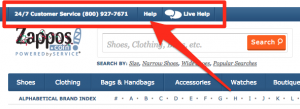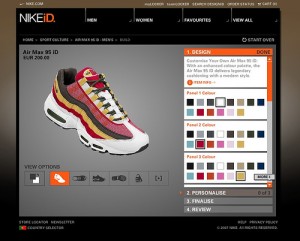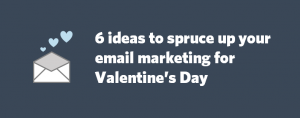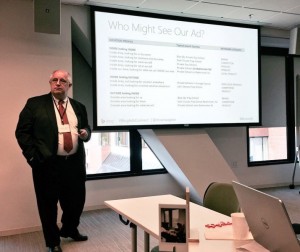
In the 1990s people started creating online diaries. They were given the title of “web logs.” Popular myth has it that it became “we blog” and the “we” got dropped for the sake of language expediency. The word “blog” then emerged from the mist of vernacular evolution.
That’s opening story on the emergence of the blog word!
Blogging has changed a lot since those times and with the evolution of the digital ecosystem it has reached new highs.
A blogging tipping point
The tale doesn’t stop there because the blog hit a tipping point in 2011 when Arianna Huffington sold her “super blog” to AOL for $ 315 million. That made a few bloggers sit up and take notice along with the mainstream media and entrepreneurs. That sale said blogging had moved out of the geek closet to mainstream media.
So the humble blog is 20 years old and is no longer just about geeks and the web but about online publishing, content marketing, and it has become a serious business and source revenue for many e-preneurs around the world.
The attraction
One attraction to me when I started my blog was the power of the social web to reach a global audience with my ideas and content without leaving my desk. It was “my” publishing machine. It cost me $ 10 for the domain name. That was it.
What also drew me to blogging was a combination of it being my creation portal, a lifestyle business and a place to make a difference and make my own dent in the universe. For many it is also the platform for self-development.
This includes:
Learning: A place to express and structure your thoughts and creations. The process of putting it down and structuring your ideas means you have to activate the neurons. The learning from just this process cannot be underestimated.
Documenting: It is a portal to document “your” intellectual property. Your “IP” is then not lost to humanity (or even to your own forgetful mind) but recorded for people to read view and share. This is the legacy part. This digital record keeping is becoming part of the global mind. It could last forever if the electricity doesn’t turn off and the data centers remain online.
Discipline: The discipline of reading, researching, and creating will lead to personal discoveries of abilities you may not even know you had. You may also oncover passions and interests that have been dormant or undiscovered.
Networking: Creating and sharing online will lead to powerful connections globally as people discover your art. These connections will lead to many opportunities if you are prepared to sit down, strap yourself in, and do the work
You will not see or experience these benefits until well after you have started, but they are real. I know, because this has been my journey.
What’s driven this evolution?
Blogging has been transformed by many factors over the last five years since I started. The speed of the Internet has increased, the audience has become larger and smart phones and tablets have become ever present. The Internet is expected to grow from nearly 3 billion to over 6 billion people in the next decade. That is a lot of opportunity and also a challenge as the web noise makes standing out even harder.
That is why starting now has many advantages. It’s placing your stake in the ground for the digital gold rush. It means building digital assets of content and distribution today that will grow as you create and “earn” authority online. Blogging has also been supercharged by two obsessive technologies. Social media and smart phones.
This is a heady and powerful mix. You could call it the perfect storm. Bloggers need to embrace both and learn how to use them to maximum effect.
Blogging business models to consider
So how can you make money from blogging?
There are many business models. Many bloggers have multiple revenue streams. Darren Rowse at Problogger lists twelve and Michael Hyatt mentions seven. Let’s look at a few key business models that are proven. The advertising revenue model of Mashable and Huffington Post require large audiences that mean attracting traffic into the millions or ten of millions per month and I don’t intend to discuss it further here. But here are some that are achievable for almost everyone with the right persistence and focus.
- Selling your knowledge with an ebook.
- Providing a monthly subscription service to access resources and premium content.
- Selling online courses.
- Selling consulting, speaking and advisory services.
- Earning money through joint ventures and collaboration. This is also sometimes called “affiliate” marketing.
These are just five proven methods and can be done from one blog.
How to start a blog that makes money?
Here are 10 key pillars that will assist you in building you a lifestyle business that will transform your life and work for your personal passions and purpose.
How do I know that they work?
Because this blog makes a six figure income that takes me around the world speaking, created a lifestyle that I love, built global business networks and created many lucrative and surprising opportunities.
If you are looking for a “get rich quick scheme” then stop reading now and buy a lottery ticket.
Here are the steps I have discovered through five years of trial and error, hard work and blood sweat and tears.
1. Discover your passion and purpose
Random mutterings online show lack of focus. Make sure you have your direction and purpose clear as possible for your blog. This is the foundation that will keep you going.
Can you state what you’re about in 20 words or less? You need a spark to start a fire. That’s the passion piece. This is what will sustain you when inspiration deserts you and doubts engulf your daily life. One particular approach that provides a simple framework is worth considering. Porter Gale’s steps to discovering your focus is quite helpful without overcomplicating it.
The 4 steps
- List your passions.
- Discover the sweet spot at the intersection.
- Describe your tone – Witty, Irreverent, Inspirational, etc.
- Write the 20 word mission statement that distills your purpose.
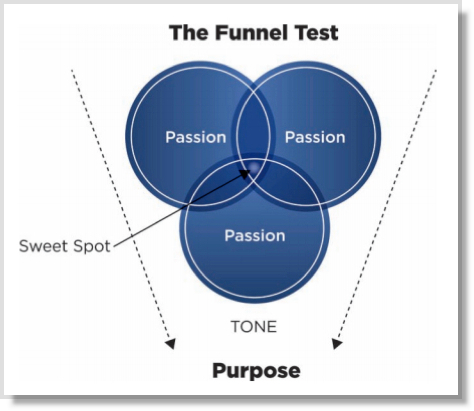 Some of you may already have this nailed but nuancing it to be as clear as possible is vital for long term success.
Some of you may already have this nailed but nuancing it to be as clear as possible is vital for long term success.
2. Identify your target audience
Your target audience needs to be clearly defined. Understanding the humanity that lies behind the sterile data of demographics is vital to get into the heart and soul of your global niche.
Personas have emerged in the past few years as a means to put a human face to the soulless and faceless stats of the demographic data scientist. The problem is that just considering a demographic profile misses that human element. So personas were invented to help the new breed of marketer understand the human side of the data.
Personas have problems, challenges and aspirations both as an individual and as an employee of a company. Newspapers have understood this at a primal layer for a long time in what news they published on the front page. Editors and journalists have known for a long time that “If it bleeds it leads.” Fear sells newspapers.
Personas have personalities, they have fears, wants, and passions. Demographics have ages, an assigned gender, and even a college degree.
So it doesn’t matter whether you are a blogger, a brand or social media marketer, You need to make your content human.
To develop a persona requires asking some questions.
Questions you need to be asking
To develop a persona you need to be asking some questions about your typical buyer. Here are a few to get you started.
- What are their biggest problems and challenges in their job?
- Where do they get their information from? Blogs, trade magazines, books?
- What would stop them changing to your product or service?
- What conferences do they attend?
- How do they convince their boss to make a buying decision? Do they print off an ebook and put it on his desk?
- What media do they consume? YouTube videos, white papers, podcasts?
When you start to know the answers to some of these questions then your content creation for your target audience will begin to be relevant and appropriate.
3. Design and build your blog
Design is what consumes most of people’s time. For many, it is how it looks. Yes…looks are very important… but design goes much deeper than that. It is also how it works. Design that matters and manages the tension between form and function can be beautiful to behold. Steve Jobs knew and understood that.
So hire a designer that understands that it isn’t just about having a beautiful face but powerful and essential functions.
What are some essential elements to include in your blog design and functions?
- Ensure it is designed for search engines. Make sure that the web designer includes clean coding that allows the the top 25-30 key phrases you want to rank for on Google easily be crawled by the search engines crawler for indexing. Also, upload a plugin such as Yoast that optimizes content for search.
- Include social sharing buttons such as Twitter, Facebook, LinkedIn, and Google+.
- The design should allow easy following on your social networks.
- Make it simple for people to subscribe to your email address by including a pop-up on entry or exit that offers free content in exchange for their email address.
- Include social proof. This displays your online credibility that is seen at a glance. This is what are your awards, how many people are sharing your content.
- Design is not just how it looks or even the content. It is essential that “calls to action” are built into the design and function. These include “Follow us,” “like” us, subscribe, or download our free ebook.
- Easy to read fonts. Don’t make your text so small that it is hard to read.
4. Hosting your blog
Ever been to blog that is so slow to load that you click away. That can sometimes be put down to having a slow internet connection. Often though it is because you are sharing a hosting computer with hundreds of other domains. It has become vital with Google’s new attention to user experience that your site loads quickly. If your site is slow then you will find that it will affect your sites search engine results as Google gives your site a small black cross. This little rule is now written into Google’s algorithms.
Fast is good.
The other key here is having a site that is online 24/7. You may pay a little more but in the end you will be thankful. especially when you are building a blog that means business I have found that my hosting supplier Blue Host, provides robust and cost effective blog and website hosting with great support with a free WordPress template for only $ 3.49 per month.
5. Create free content
Content marketing is the new “black” when it comes to driving traffic. Its about attracting traffic rather than chasing it. Creating and giving away free content build credibility and trust and can position you as a thought leader in your industry.
It improves your SEO (Search engine optimisation) for your blog and this drives “organic” search engine traffic when you are found in search results. How important is search engine traffic? In most cases it drives 300% more traffic than social networks. Today on my blog it is over 55% of all my traffic. Being found on page one brings 90% of all clicks.
It also leads to referral traffic when people find your content is so good they “hyperlink” back to your articles.
Content marketing tactics
- Create tempting headlines that drive “clicks”. I can’t stress how important developing and continuing to hone this skill is.
- Make sure you have social sharing buttons that are “very” visible at the top or a floating bar on the side. (Don’t hide them down the bottom.)
- After publishing, share your content in as many appropriate social networks as possible.
- Write long form content. Google is rewarding long form content (some say 1,500 words or more) by ranking it higher in search engines.
- Create evergreen content. This allows you to keep tweeting and posting it on a recurring basis over time to social networks and hence builds more traffic from one piece of content.
- Turn one piece of content into multiple formats. A written blog post can be turned into a podcast, a slideshare presentation, video, and even an infographic.
- Create or use “infographics.” People love to share quality visuals. They also tend to be embedded and hence continue to drive referral traffic.
Note: The presentation design for this infographic was done by 24slides.com
6. Build distribution
Taking control of your blog and content distribution should be done from day one. There are four key distribution tactics.
- Social
- Email
- Search
- Mobile
Social
Social media marketing is in essence just two things. Content (media) and Distribution (social networks). Get them right and the rest follows. Increased traffic, brand awareness, and sales.
But creating the content is one thing but making it move is another. That is why growing your social networks is so important. It puts the power in your hands. That is what excited me when I saw the potential of social for the first time. Access to a global market in real time at high speed.
Beyonce and her marketing gurus got it right when in December 2013, she bypassed mass media to launched her new album on her own social networks. There wasn’t one TV show or mass media channel to be seen.
This was a marketing tipping point.
We also have many social network choices. They are global and still can be “earned” and built directly with your own audience. It takes time but the application of persistent effort is rewarded with your own content delivery networks. Bigger is better.
It’s a long-term game.
You will also have to choose which networks you want to focus on. One is not enough and it also risky because as the social networks evolve they keep changing the game and their algorithms. It’s all your eggs in one basket thing. For many that is the Facebook bucket. Be wary of committing your focus to just one platform.
Email may be perceived as not cool but it does allow you to reach your dedicated audience when you want. Build your email list from the first day your blog goes “live.”
Search
Search engines will give you nothing on the first day you publish, this fact means that “search engine optimisation” or “SEO” is ignored by many. But I promise you that if you invest in the key elements of “SEO” that a couple of years later that Google will reward you with free traffic when you start ranking on page one.
Mobile
Mobile is not a distribution network but it is a platform that needs special attention. So much media is now consumed on mobile devices (it is often 50% or more of blog and ecommerce traffic) that making sure that you have optimized your blog for smart phones and tablets is absolutely essential!
Optimized for mobile means people can:
- Read your content easily without magnifying glasses.
- Subscribe to your email list on a mobile device.
- Buy your services and products without waiting to get home to their desktop.
7. Create and package your knowledge
Do you have decades of experience and expertise that is worth something to a knowledge hungry world? Is it locked up in your grey matter? Not structured or packaged?
Today most of us are knowledge workers.
You might be in finance, marketing, technology or public relations. Do you have industry knowledge that is highly valued? Businesses buy expertise and knowledge workers to add value to their businesses.
Maybe it’s time to sit down, outline, and unlock that knowledge for your benefit. You may even have a part time hobby and passion that could be bundled up into an online course or ebook to be monetized.
Blogs and the ability to self publish is opening up opportunities for “you” to be paid for your knowledge and creativity.
The rise of the online creative
The freedom to publish that blogging provides, is powering a new revolution of knowledge sharing, expression, and creativity that is unprecedented.
Closet cooks are both demonstrating and displaying their culinary skills via video, recipes, and teasing photos on foodie blogs.
Photographers are taking us on their local and world journeys. They are revealing corners of the globe that are exposing hidden cultures, geography and private lives for us to glimpse at like voyeurs. They are published to blogs, Facebook, and Twitter.
Even teenagers create fashion that surprise us and is uploaded to YouTube and shared to a global audience.
Have a passion and some expertise and add a dose of technology and publish online. You can build an audience of thousands.
But there’s a problem
I was recently viewing a TED talk by Jared Diamond and he posed a question to a problem that is worth answering.
“How should we use our old people?”
This question was framed in a way that starts the journey in how we can come up with solutions to help societies grow old better. This dilemma has been created because modern society values youth and beauty over wisdom, age, and experience. This has in part been created by the rise of technology as wisdom and knowledge in the past lay within the minds of the elders of the tribe.
Today we just Google knowledge.
It has made the finding of knowledge a technology solution. This is taking away the importance and role of the elders of our society.
So what does technology not touch that our wise older generation can still offer? Jared has a few suggestions.
- Experience
- Understanding of human relationships
- Ability to help other people without ego getting in the way
- Leadership
- Networking
- Interdisciplinary knowledge, e.g. history, politics, and economics
- Supervising
- Administrating
- Advising
- Strategizing
- Teaching
- Synthesizing
- Devising long term plans
But there is a solution.
A solution
The technology that is the problem can also be the answer that taps into that wealth of wisdom and experience of decades. Help, build awareness, and train the older generation to package, publish, and promote their decades of knowledge, experience, and insights on blogs and websites.
Here are some tips on how to package your knowledge to sell on your blog.
The first step to packaging your knowledge
So how do you approach packaging your knowledge?
The simplest place to start is to write a book. It can start with a short ebook. It doesn’t have to be long. Make it 10-15 pages. That’s the practice part. This is where you can distil your knowledge into chunk size bites that will help you start structuring and synthesizing your knowledge.
Then you can write a longer ebook that can also be turned into a printed book. There are a variety of “on demand” printing services that can assist you to create a print version. Blog posts can also be re-purposed and turned into chapters with some editing and rewriting.
The premium packaging of your expertise
The next steps are to add premium packaged versions of your knowledge.
If you want to take your ebook content to the next level you can supercharge your content by adding premium media and content.
Here is how you can turn a $ 29 ebook into a $ 3,000 product. This is how it can be done.
- Add a podcast version – now you can charge $ 97.
- Add a Camtasia video version of the eBook where you record the screen shots in a video format while chatting through the eBook content – Sell that product for $ 597.
- Add interviews with experts – Sell product for $ 1,097.
- Offer personal coaching as part of the package – Sell for $ 2,097..
- Put it in a DVD package – Sell it all for $ 3,000.
You can also then put on a live two-day seminar and sell the tickets for $ 2,000. What about you?
Have you a wealth of knowledge that is wanting to get out? Have you decades of experience and “know how” that the rest of the world could benefit from?
Have you thought about productizing it?
8. Upload to your digital educating platform
Selling your knowledge can also be done many ways. Two popular ways are:
- Ebooks
- Online courses
To keep it simple let’s just look at selling your ebook for your first step.
Ebook
Once you have created your product(s) to sell on your blog you need an automated way to sell and deliver the ebook or video tutorial download. In the past this meant some tricky programming to integrate different systems to deliver the download and to process the credit card transaction.
This has changed.
For example, the Selz platform can be setup in a matter of minutes and can be used to sell both digital and physical products.
Selz has been developed with the modern online entrepreneur in mind. Using Selz you can maximise your sales effortlessly without having to spend precious time on the mechanics of running an online business. Selz allows you to upload the ebook or video for you and automatically delivers the files when a customer purchases them.
Selz also makes it easier to build a customer email list as it integrates with three of the most popular email systems Aweber, Mailchimp, and Campaign Monitor. By connecting it up to your email platform you can build your email list for marketing your next book or online course.
Getting serious
If you want to get serious and build a whole ecosystem for:
- Hosting your course material
- Managing affiliates
- Accepting and managing payments
- Reporting
- Emailing and automating your marketing
Then you have two choices for your packaged “premium” content and courses that you sell.
- Build your own custom website (eg. WordPress platform with special templates).
- Invest in a “cloud” based platforms such as Infusionsoft (starts from $ 199) or Ontraport (starts from $ 279) but with a lot more included as standard with everything already built in.
These platforms come into their own when you are selling your own online courses and are working with joint venture partners and online influencers.
9. Build joint ventures
To amplify your marketing efforts then working with other bloggers is essential.
What is important to realise is that the social web allows you to work with other bloggers and businesses to reach each other’s customers. These “Joint Venture” relationships will amplify and multiply your marketing. With Internet marketing this is often called “affiliate marketing.”
Think about this for a moment. If you were able to work with 10 other bloggers who all had 10,000 emails each and you have 10,000 then you have just connected to a network of 100,000. That is an increase of 1,000 percent! This has to be done with high quality content and must be done with care, credibility and trust.
As Porter Gale states: “Your network is your net worth.”
10. Launch and market your product with joint venture partners
You have designed and developed your blog, created content built traffic and created relationships with partners.
If you want to take selling your product to a new level then you can create a solid process of putting in place online digital promotion campaigns with your joint venture partners.
Two of the most popular approaches include:
- Selling from an online webinar: This means having your digital product ready for sale, affiliate platform setup, partner that has a large email list (10,000+). The next steps include setting a webinar date with 1-2 weeks of promotion and then educate and sell at the backend of the webinar with a close and call to action.
- “Launch formula” process: Creating and launching your product with a whole team of joint venture partners. This is when you really sell your product “at scale.” This strategy that has been created over the last decade to sell your knowledge online and is known as the “launch process.” Jeff Walker is seen as the “God Father” of this approach.
If you really want to launch your product then you need to learn the art of the the launch process
It includes the following:
- Pre-launch
- Launch
- Post launch
If you want to learn about this in more detail then I would recommend that you read Jeff Walker’s book Launch.
What about you?
Have you started your blog? Have knowledge you can package and sell? Haven’t got it just right.
Maybe it’s time to start. Remember, “Done is better than perfect.”
(288)




